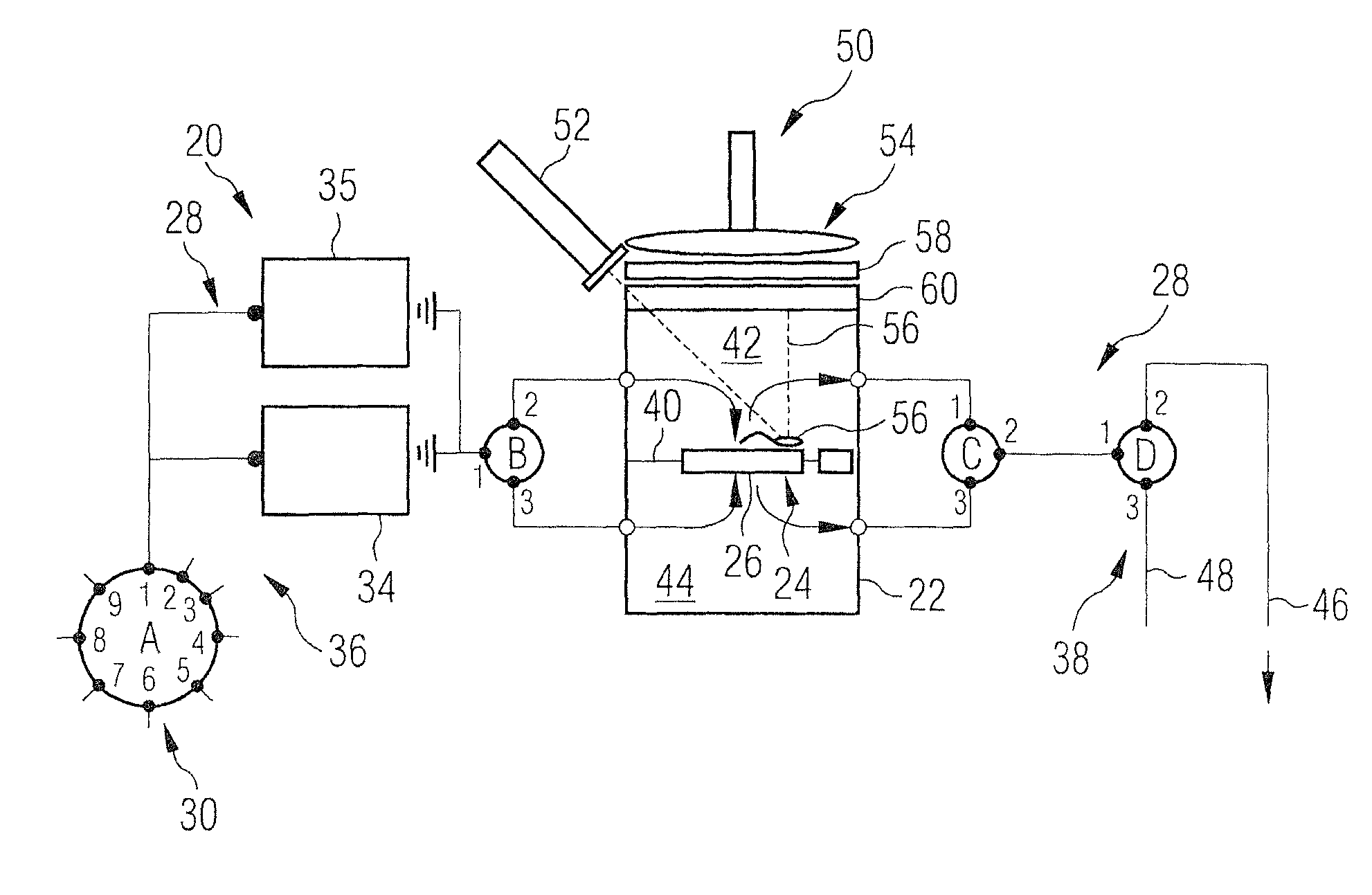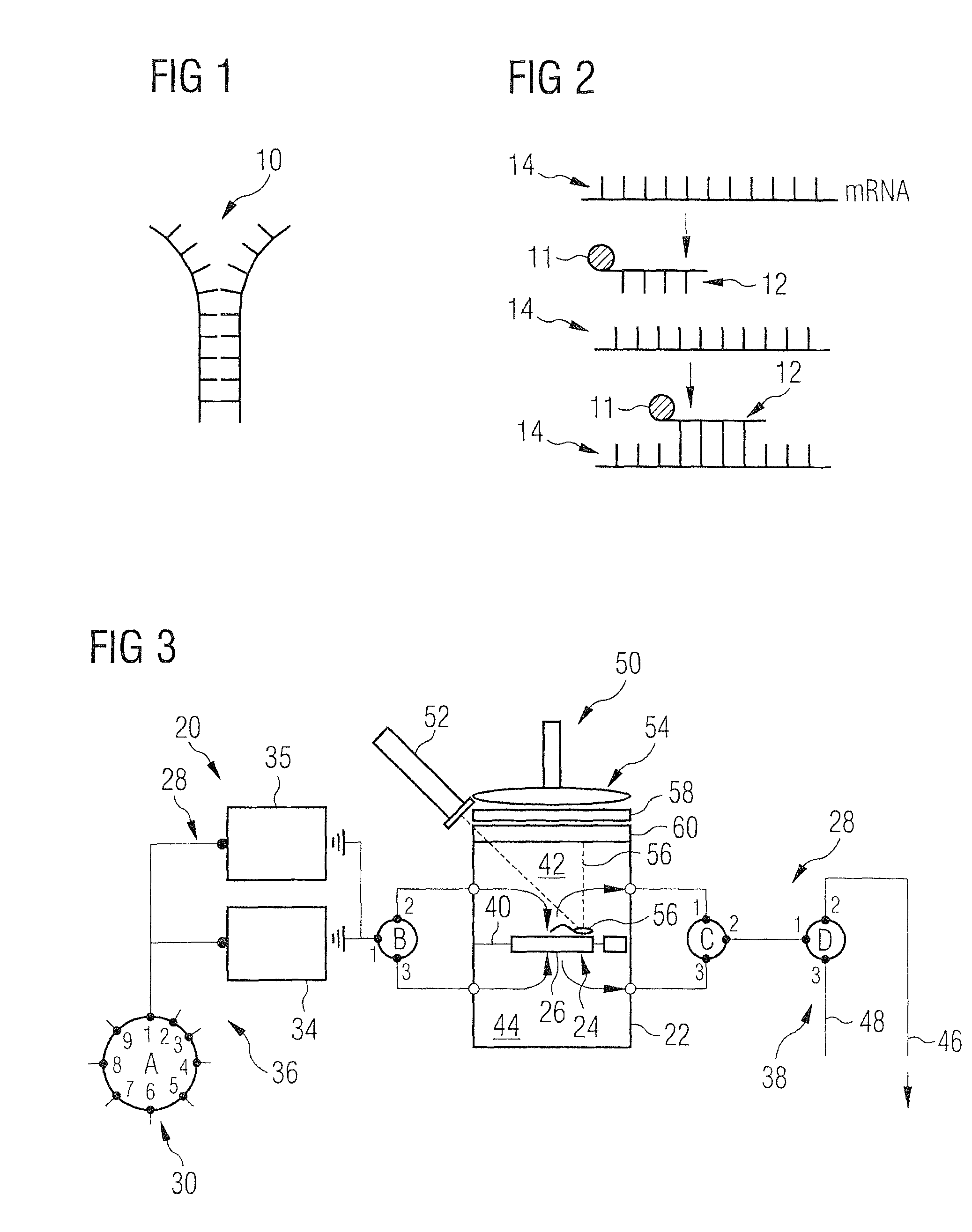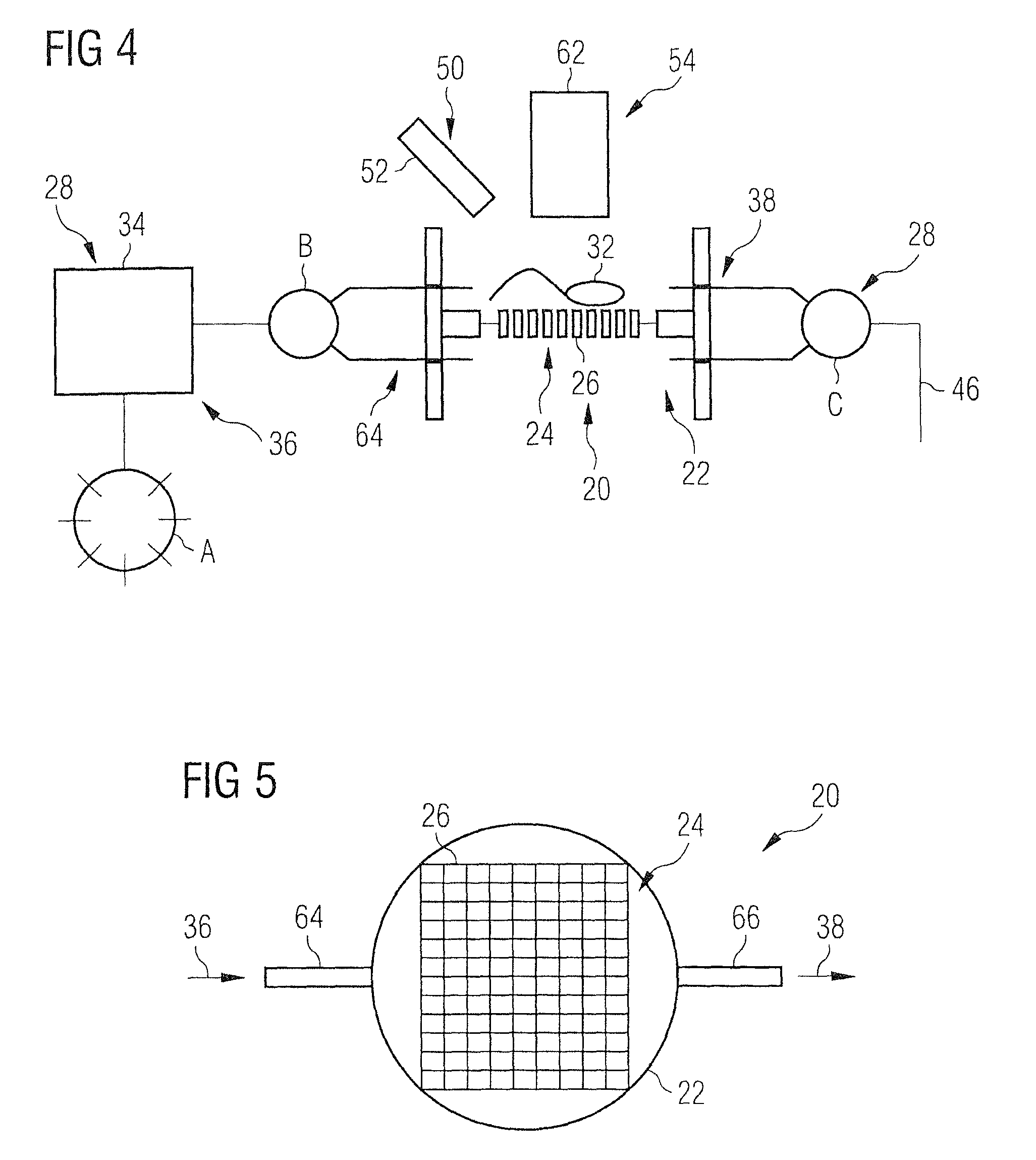Detection device for detecting biological microparticles such as bacteria, viruses, spores, pollen or biological toxins, and detection method
a detection device and biological microparticle technology, applied in the field of detection devices, can solve the problems of inability to detect in situ hybridization, affecting the detection effect, and requiring a large amount of time for conventional detection of living cells or cell number determination of living cells, so as to achieve rapid, reliable and uncomplicated automatic detection
- Summary
- Abstract
- Description
- Claims
- Application Information
AI Technical Summary
Benefits of technology
Problems solved by technology
Method used
Image
Examples
Embodiment Construction
[0046]A method and a device for the detection of micro particles that can be marked by probes capable of being detected by radiation will be more clearly described in the following with reference to the drawings. The device and the method are particularly suited for the detection of living bacteria by means of nucleic acid probes or of viruses or biological toxins by means of proteins including antibodies for the probes. Before explaining the device and the method, the general methods for marking such micro particles by means of such probes will be more clearly explained.
[0047]Drinking water contains different living and dead bacteria. A part thereof can be pathogenic. Only the living bacteria are relevant, because these alone multiply and may constitute a health risk.
[0048]But many conventional detection methods based upon antibodies or PCR are incapable of differentiating between living and dead bacteria. In the following, a device and a method will be described which in fact allo...
PUM
 Login to View More
Login to View More Abstract
Description
Claims
Application Information
 Login to View More
Login to View More - R&D
- Intellectual Property
- Life Sciences
- Materials
- Tech Scout
- Unparalleled Data Quality
- Higher Quality Content
- 60% Fewer Hallucinations
Browse by: Latest US Patents, China's latest patents, Technical Efficacy Thesaurus, Application Domain, Technology Topic, Popular Technical Reports.
© 2025 PatSnap. All rights reserved.Legal|Privacy policy|Modern Slavery Act Transparency Statement|Sitemap|About US| Contact US: help@patsnap.com



